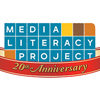At Media Literacy Project in Albuquerque, we believe that media should strengthen our communities, broaden our understanding of the world around us, and deepen our connections with each other. That is why we teach everyday people how to deconstruct media--so that we can all analyze and understand how media images, representations, and marketing influence our lives. Every month, we deconstruct an advertisement to encourage discussion of the messages in the ad and to inspire others to do the same with the ads they see. We’d like to share our September 2013 deconstruction with you. Please comment and let us know what you think.
Hard Work Conquers All: Red Bull and the American Dream
Energy drinks have become a fixture in American culture, with 51% of college athletes drinking them. But little, if any, evidence exists that these drinks improve performance, and they can be unsafe. The World of Red Bull commercial implicitly claims that Red Bull helped professional athletes get where they are and can help you get there, too. Of course, the athletes, musicians, and dancers in the ad may not drink Red Bull at all and were paid by Red Bull to be in the commercial.
This sort of marketing of Red Bull can be dangerous because it preys on the hopes and dreams of young people who want to make it in really competitive fields. This particular ad in the World of Red Bull campaign focuses on urban spaces, with a wide, panning shot of a cityscape at the beginning. The “coolness” of the city appeals to those who are there or want to see themselves in the city in the future. Other ads in the campaign, such as this one with long, sweeping shots of oceans and mountains conveying openness, try to appeal to people with different dreams, as opposed to the extreme close-ups and confined shots indicating urban spaces.
The ad tells us that if we work hard and drink Red Bull, we too can be as successful as those in the commercial. The voiceover says, “I want to wake up every morning with a passion. I want to wake up with a smile on my face and be able to say I love what I do. You can dream about it or go out and make it happen.” Therefore, the failure to make your dreams happen is all on you. It’s your fault, rather than racist, sexist, homophobic or socio-economic structures in our cultures that beat people down when they strive for more.
This is, once again, the myth of the American Dream. The American Dream has survived so long because it’s pliant, with different versions of the dream appealing to people in diverse situations. But all versions require one fundamental element: hard work. In the U.S., hard work conquers all. Or so we are told again and again through marketing like Red Bull’s, through political rhetoric and even by our own families and communities. But the myth of the American Dream is that there’s a level playing field, that we all start from the same place, and that all obstacles are equal. Everyone has hurdles in achieving their dreams, such as a knee injury that keeps an athlete out for the season. However, that knee injury affects people's careers very differently if they have access or not to the finest doctors and coaches.
The road to making a living as an athlete, while tough for all, is even harder for women due to lower pay and fewer professional opportunities. Although there are 10 times as many NCAA female athletes today as when Title IX was created, female athletes now are half as likely to have a woman head coach.
Male players have their own obstacles. Out of the NBA, NFL, NHL, and MLB, there is only one openly gay player, Jason Collins, who came out in April 2013. While Black men are heavily represented in college sports, a 2011 study found that only 59% of Black players graduate, as compared to 91% of White men. While universities make millions off of Black players many were “only to be dropped without a college degree when their playing days were over,” according to Arne Duncan, Education Secretary.
Red Bull ignores the structures in place that make it easier for some people to achieve their dreams than others. According to the ad, Red Bull will help young people overcome hurdles, by giving them a boost in their performance. The ad associates Red Bull with high performance to perpetrate the persuasive technique called the “big lie.” Energy drinks, not to be confused with sports drinks like Gatorade, cause dehydration, which further exacerbates the dehydration caused by exercise.
The untold stories are of the people who have become ill or died from energy drinks. According to USA Today, 13,114 people went to the emergency room for energy drink complications in 2009. In 44% of those cases, the energy drink was combined with another substance. However, that means 7,343 cases were due to energy drinks alone. According to The Sport Journal, an 18-year-old, healthy, Irish, basketball player went into cardiac arrest after drinking four cans of a Red Bull before a game. When combined with alcohol, medications, or supplements, energy drinks become even more dangerous.
Red Bull may give you wings, but doesn’t stop you from getting sick from the flight.



Responses to “Hard Work Conquers All: Red Bull and the American Dream”